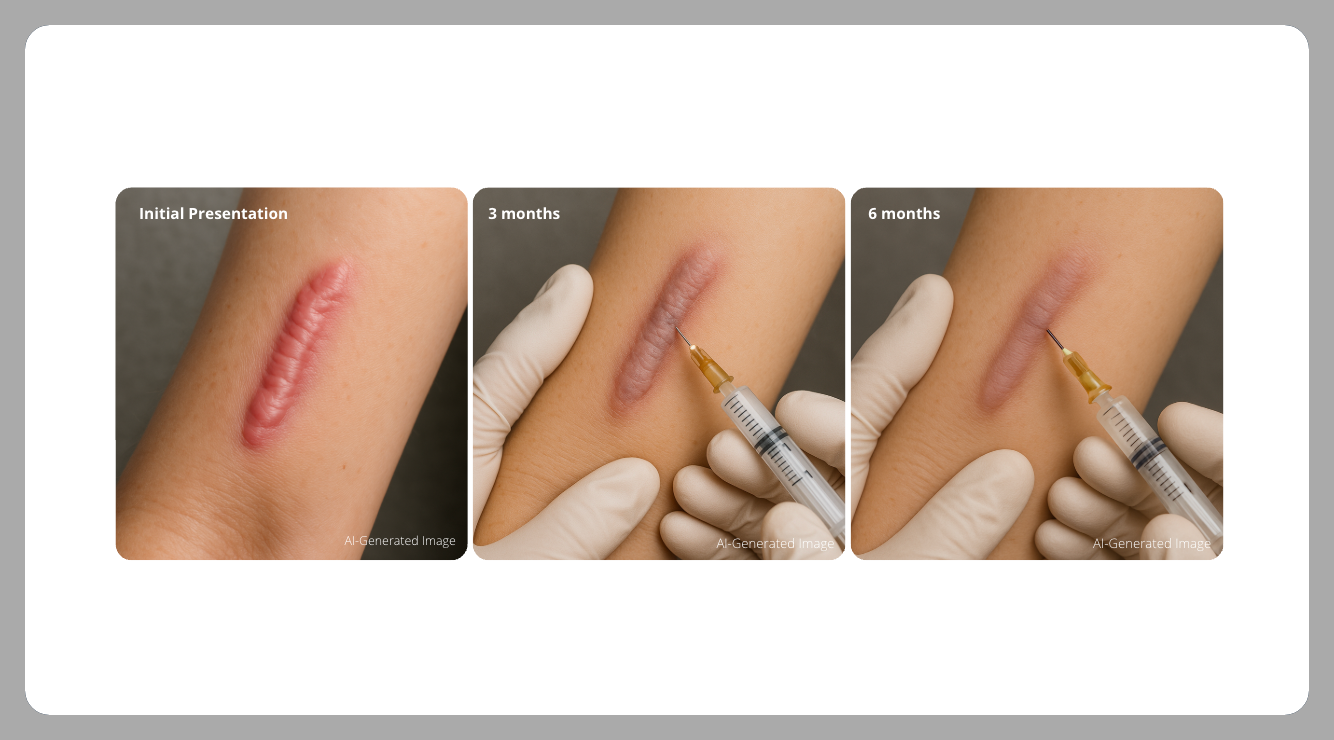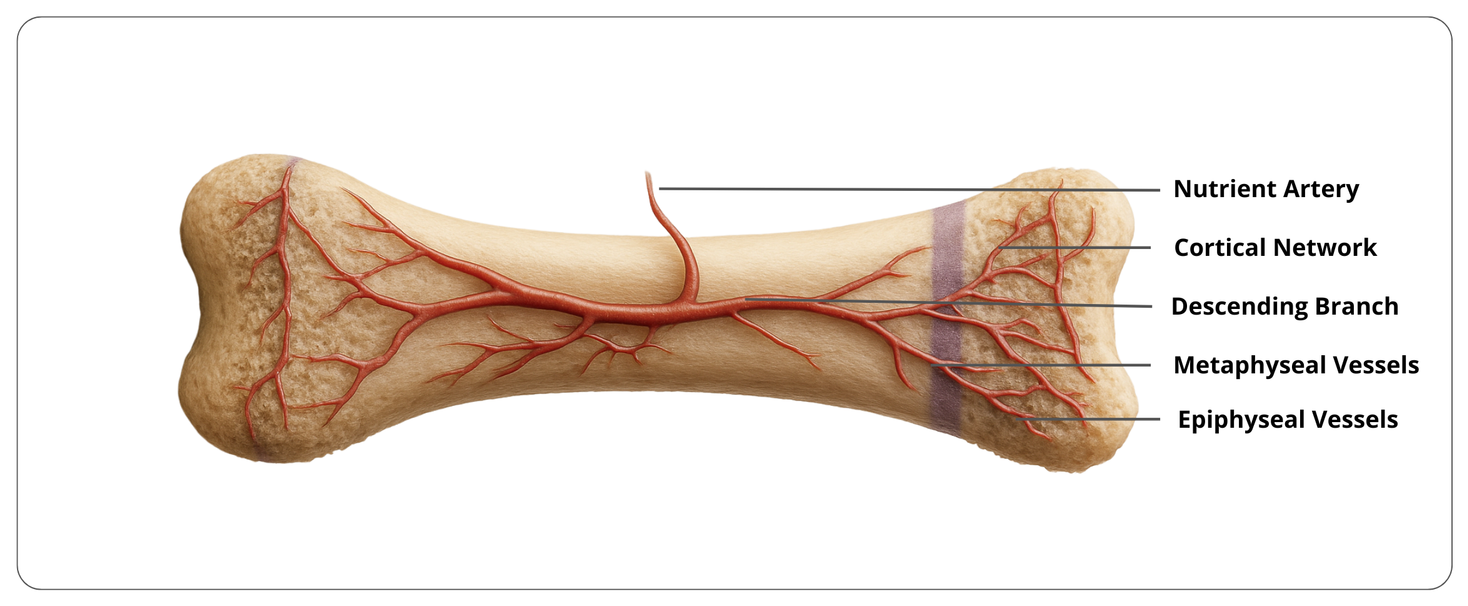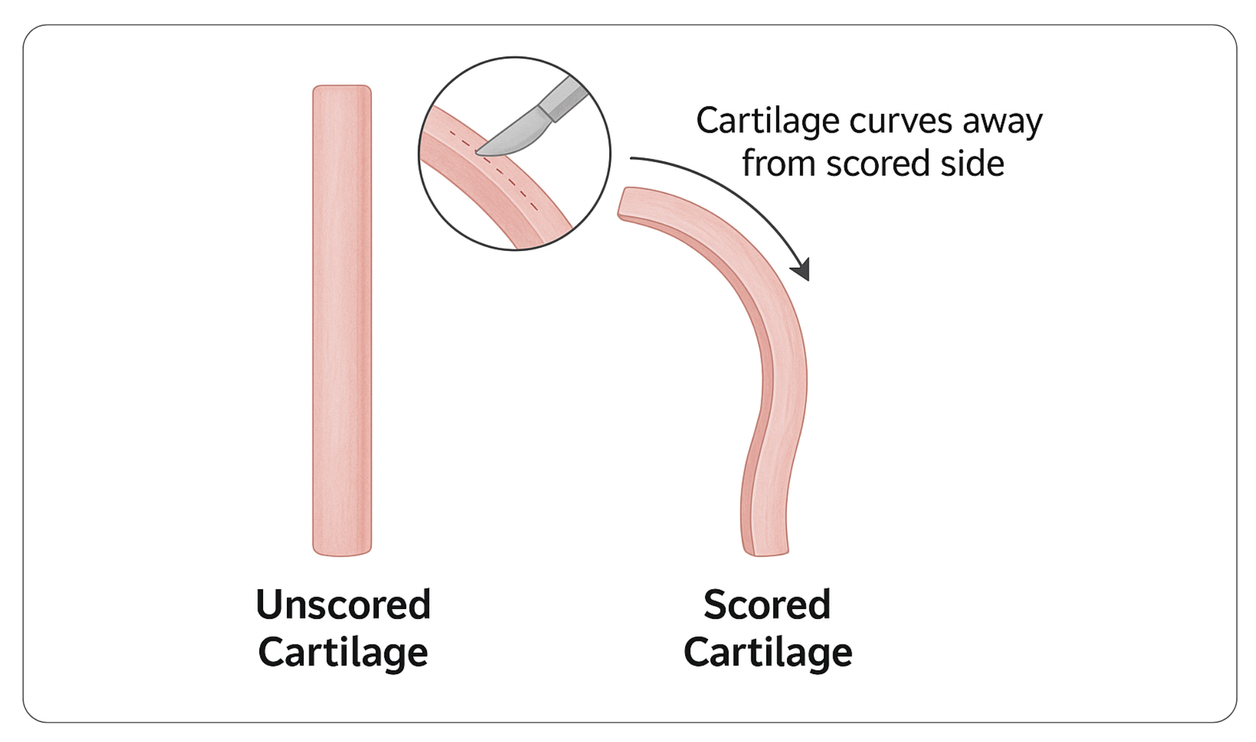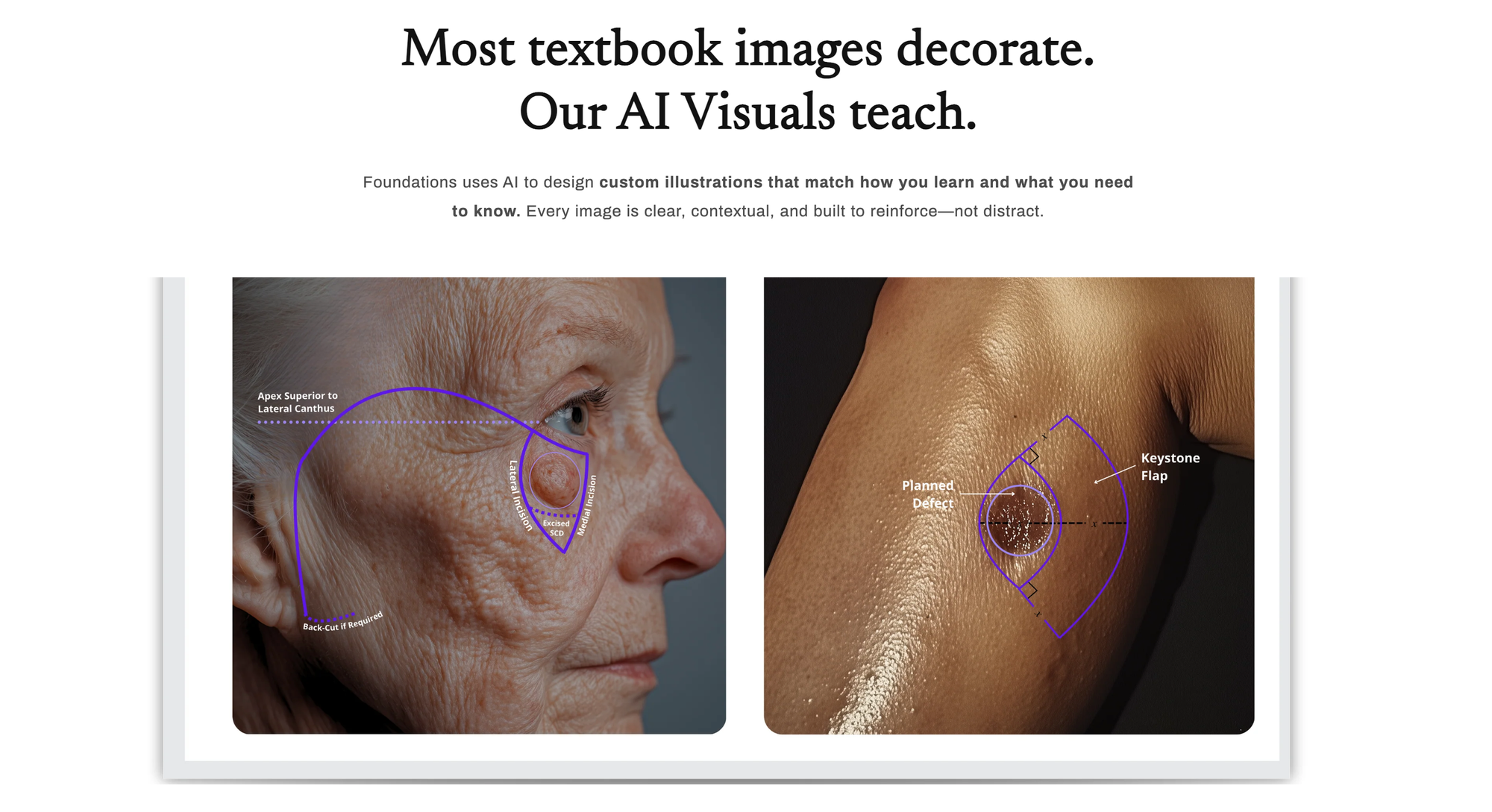In this week's edition
- ✍️ Letter from P'Fella
Textbook images are useless. - 🤓 The Sunday Quiz
*Drumroll🥁* new winner announced! - 🖼️ Image of the Week
Blood supply of long bones. - 🚑 Technique Tip
Cartilage scoring for controlled bending. - 🎓 The Fellow's Corner
Journal review: Epidemiology of upper limb necrotising fasciitis. - 📘 Foundations Textbook
Pre-orders open now! - 📖 What Does the Evidence Say
Cortical vs cancellous bone. - 🔥 Articles of the Week
Original Gibson principle, upper limb bone graft options, & basic properties of cartilage grafts: with 1-sentence summaries. - 💕 Feedback
Suggest ideas & give feedback!
A Letter from P'Fella
Textbook Images are Useless
Most Surgical Diagrams Are Useless
Let’s call it what it is—most textbook flap diagrams are trash.
They’re either oversimplified cartoons or overcomplicated messes. You can’t teach real surgery with that. And yet, we’ve accepted it for decades. Why?
We’re Fixing That—with AI
That image blow? It’s not clipart. It’s AI-generated. Built for surgeons. Designed to actually teach.
We’re now using AI to create surgical visuals that finally do justice to the procedures:
- Skin markings that look like the real thing
- Planes you can actually follow
- No filler, no fluff—just clarity
This isn’t gimmicky tech. It’s a new standard for how we visualise plastic surgery.

Why It Matters
Surgery is visual. Always has been. So why are we still relying on sketches from 1996?
With AI, we’re done waiting for illustrators. Done guessing what’s happening in that blurry intra-op photo. We’re generating what we need, when we need it—and making it look how it should.
It’s All Going Into Foundations
This is the type of content going into our new textbook. But Foundations isn’t just a book—it’s a statement.
Surgical education should be clear. Visual. Modern. And we’re done settling for less.
With love (and decent diagrams, finally),
P’Fella ❤️
The Sunday Quiz
*Drumroll🥁* New Winners on Board!
We're thrilled to announce the winners of this edition's quiz. After six rounds of questions on plastic surgery, our winner is Anna from Denver! Please reply to this email or drop us a message to claim your prize!
Thanks to everyone who took part — we’ll be back with more challenges in the next edition 🧠

Image of the Week
Blood Supply of Long Bones
This week’s image is a feature from our upcoming textbook Foundations: The vascular anatomy of a long bone, a fundamental concept in trauma, orthoplastics, and flap planning.
Key components:
- Nutrient artery for primary diaphyseal supply
- Cortical and periosteal network
- Metaphyseal and epiphyseal vessels essential for healing and growth
- Descending branches contributing to inner cortical supply

Technique Tip
Cartilage Scoring for Controlled Bending
This week’s tip comes from our upcoming textbook, Foundations, and highlights a fundamental surgical principle in cartilage manipulation.
The Gibson Principle demonstrates that when cartilage is scored on one side, it will bend away from the scored surface. This controlled bending technique is particularly useful in rhinoplasty, auricular reconstruction, and costal cartilage shaping.

the Fellows' Corner
Journal Review: Epidemiology of Upper Limb Necrotising Fasciitis in England

In this Journal Club
Epidemiology of upper limb necrotising fasciitis in England: A national study (1998-2018). Ky-Leigh Ang et al. JPRAS 2025 May
5-Point Summary
Upper limb necrotising fasciitis (NF) is a rare, aggressive infection with rising incidence in England. This national cohort study of 728 patients highlights key demographic trends and clinical outcomes, with a 16% mortality rate despite treatment.
4-Key Findings
Incidence increased 250% between 1998 and 2013, stabilising thereafter. Most patients were male (64%), mean age of 55, and from deprived areas. Average hospital stay was 28 days. Mortality was 14% at 30 days and 16% at 90 days.
3-Critiques
HES data excludes patients who died pre-hospital, underestimating incidence. Lack of IV drug use data limits risk factor analysis. Coding limitations may result in missed or misclassified cases.
2-Practical Takeaways
NF should be considered in otherwise healthy patients presenting with severe limb pain and systemic symptoms. Early intervention and addressing socioeconomic risk factors are key to reducing mortality.
1-Recommended Reading
Uehara et al.’s retrospective study (116 patients) identifies risk factors for death and amputation in upper limb NF, offering global context to national findings.
Foundations Textbook
Pre-Orders Open Now!

Foundations is the only plastic surgery textbook that keeps itself up to date after it’s printed. Our built-in QR codes link directly to live article updates, new visuals, and the latest clinical evidence. No logins. No app. Just scan and learn.
👉 140+ essential topics
👉 Clinical-first, curriculum-mapped content
👉 Short-form chapters for rapid recall
👉 AI-powered visuals designed to teach
Reserve Your Copy Today!
What Does the Evidence Say?
Cortical vs Cancellous Bone
In metaphyseal bone environments, cancellous screws generally demonstrate superior biomechanical properties compared to cortical screws, particularly in lower-density bone (Wang et al., 2016). However, this advantage may not be significant in osteoporotic cortical bone (Wall et al., 2010). For scaphoid nonunion repairs, packed cancellous grafts show more robust early healing than corticocancellous grafts when used with volar locking plates (Stoltz et al., 2024). In contrast, cancellous grafting leads to earlier union than corticocancellous grafting when combined with headless compression screws (Kim et al., 2017). The choice between structural and nonstructural grafting for scaphoid nonunion may depend on the severity of scaphoid deformity (Hegazy et al., 2021).
Articles of the Week
3 Interesting Articles with One-Sentence Summaries
Cartilage warping in nasal grafts stems from intrinsic tension within rib cartilage, not the perichondrium, and can be prevented by carving grafts with a balanced cross-section to maintain structural equilibrium.
Successful upper-extremity bone grafting depends on matching graft type to biological properties with autografts offering the highest healing potential, while vascularized and synthetic options support complex or large-volume defects.
Cartilage graft distortion can be prevented by applying the principle of balanced cross-sections, with nasal septal cartilage providing a model for understanding intrinsic stress patterns and the role of matrix composition in graft behavior.


